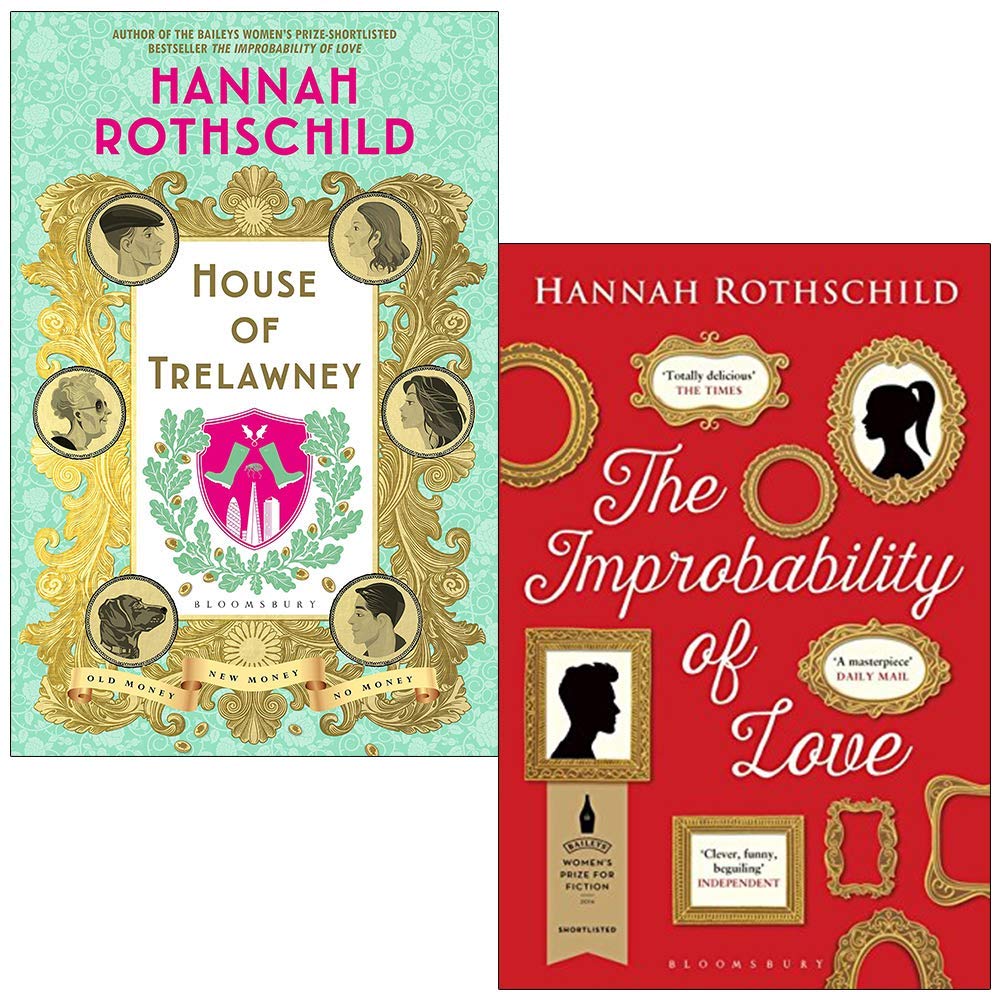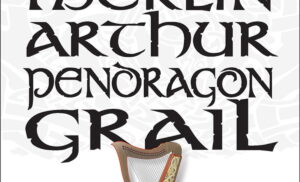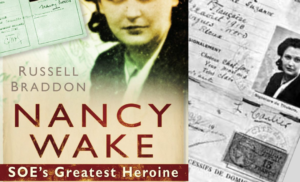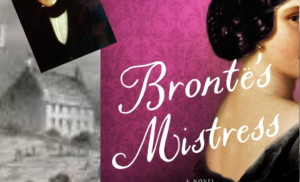
Aristocracy & Books * Aristocrazia & Libri
The success of tv series such as The Crown or Downton Abbey shows how people are fascinated by the aristocratic world, but also dissociate themselves from it, judging many habits and behaviour as ridiculous and obsolete. It’s what happens in the satirical novels by Hannah Rothschild, a descendant of the wealthy banking family, House of Trelawney and The Improbability of Love.
House of Trelawney, published in 2020, is set in 2008, during the credit crunch times, and revolves around an aristocratic Cornish family, that of Trelawney, that's been very powerful since medieval times. But now the castle is falling apart, they risk of losing it because of old debts and bad investments made by Kitto, the heir of the family. His parents seem to be living in the past and don’t realize that times have changed, they still think they have servants, while it’s their daughter-in-law Jane who runs the house, despite her marriage seems over and her relationship with their children is quite conflictual. Blaze, Kitto’s sister, was kicked out of the castle when Kitto inherited and has distanced herself from the family, creating a career in finance, but this career is about to be destroyed by an old family enemy. There is a mix of revenge, disappointment, love, forgiveness, and a glance into a world that doesn't exist anymore, but it's nevertheless fascinating. In her novels, Rothschild is very good at depicting places and characters, and lets the reader fantasize about the castle and what it might have looked like in its glorious times.
The Improbability of Love, published in 2015, revolves around the discovery of a painting (made-up and called like the book title) by 17th-18th Century French painter Watteau. It all begins when Annie, a young talented chef unable to let the past go, buys it from a junk shop as a gift for a man she’s seeing and will stand her up. We’ll get to know various characters, art dealers and collectors, impoverished aristocrat, society snobs, and we’ll also be told the story of The Improbability of Love and Watteau by the painting itself (these to me are the best and funniest parts). What should have been just a gift therefore will throw Annie into a world of beauty and ruthlessness, and she’ll find herself in serious trouble because the painting is the key to a terrible secret someone powerful wants to keep hidden. Rothschild tells the story from different points of view and social classes, and she’s always sarcastic when it comes to depict the upper class, that often comes out as silly as the one from P.G. Wodehouse novels. Some of the most fascinating sections of the book are those when the author explains how the authenticating of a piece of art works and Annie’s fancy dinners, inspired by those of the greatest monarchs of the past. There are many characters, one could say too many, but the combination works as it reflects well all the scheming and twists of the art world.
“Art follows power. Just as soldiers hang medals from their uniforms, the rich hang paintings on their walls.”
***
Il successo di programmi televisivi come The Crown o Downton Abbey mostra che le persone siano da sempre molto affascinate dal mondo aristocratico ma al contempo ne prendano le distanze, giudicandone ridicoli e obsoleti molti comportamenti e usi. È quello che accade nei romanzi satirici di Hannah Rothschild, discendente della ricca famiglia di banchieri, Casa Trelawney e L'improbabilità dell'amore.
Casa Trelawney è ambientato nel 2008, periodo della recessione, e gira attorno a una famiglia aristocratica della Cornovaglia, quella di Trelawney appunto, molto potente e influente sin dal Medioevo. Ora però il loro castello sta andando a pezzi e rischiano di perderlo per via dei debiti ammassati nei decenni e dei cattivi investimenti dell’erede Kitto. I due genitori anziani non si rendono conto che i tempi sono cambiati e credono di avere ancora al servizio dei domestici, mentre in realtà è la nuora Jane che manda avanti la casa, nonostante il rapporto con Kitto sia alla frutta e quello con i figli molto conflittuale. Blaze, la sorella di Kitto, ha invece voltato pagina già da anni, essendo stata cacciata dal castello dopo che il fratello lo ha ereditato, e lavora nella finanza. Tuttavia, nonostante le sue corrette intuizioni sull’arrivo della crisi, viene estromessa dal mondo degli affari da un vecchio nemico di famiglia. Abbiamo così un mix di vendetta, delusione, amore e perdono, e uno sguardo su un mondo che non esiste più ma continua ad affascinare. In tutti i suoi romanzi, la Rothschild è molto brava a descrivere i luoghi e i personaggi, e a stimolare l’immaginazione dei lettori quando racconta del castello, ormai decrepito ma che un tempo era stato tra i più belli della nazione, dandoci l’occasione di fantasticare sul non-raccontato.
L'improbabilità dell'amore, pubblicato nel 2015, si basa sul ritrovamento di un quadro (inventato e che dà il titolo al libro) del pittore francese Watteau, che visse a cavallo tra il ’600 e ’700. Tutto comincia quando Annie, una giovane e talentuosa chef che non riesce a chiudere col passato, lo acquista da un rigattiere senza conoscerne il valore. Conosceremo poi diversi personaggi, commercianti d’arte, collezionisti, nobili decaduti, snob dell’alta società e, soprattutto, conosceremo la storia del quadro e del suo autore dal quadro stesso, che parlerà in prima persona (sono tra le parti più affascinanti e divertenti del libro). Quello che doveva essere solo un bel regalo per un uomo che Annie frequentava e che le ha tirato buca, trascina la chef in un mondo ricco di bellezza ma privo di scrupoli, che getterà la nostra protagonista in seri guai a causa di un terribile segreto che alcuni potenti vogliono tenere nascosto. La Rothschild racconta dunque la storia da vari punti di vista e classi sociali diverse, ed è sempre sarcastica quando si tratta di ritrarre l’alta società, che spesso risulta ridicola e simile a quella ironizzata dal grande P.G. Wodehouse. Grande esperta di arte, l’autrice affascina e tiene particolarmente agganciati alla pagina sia quando racconta il lavoro che sta dietro all’identificazione di un’autentica opera d’arte, sia quando descrive le meravigliose cene di Annie, tutte ispirate a quelle dei grandi regnanti dei secoli passati. I personaggi sono davvero tanti, e alcuni potrebbero ritenerli eccessivi, ma in realtà questo “patchwork” funziona e ben rappresenta gli intrighi e gli intrecci del mondo dell’arte.
«L’arte segue il potere. Come un soldato appende le medaglie sull’uniforme, il ricco appende quadri sul muro.»




